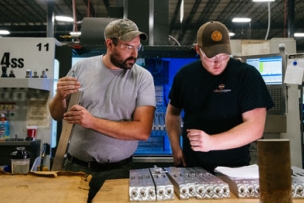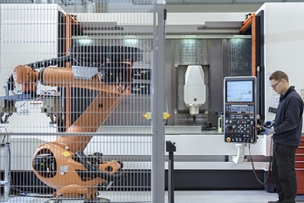The survey, which was conducted from September 2020 through November 2020, also showed an even greater number of supply chain professionals (89 percent) plan to invest in supply chain agility over the same period.
The supply chain issues of the COVID-19 pandemic have certainly shone a spotlight on the importance of resilience and flexibility. But what are the important considerations for a company looking at reshoring manufacturing operations and should they even be considering it? What trade-offs must they make when using a domestic supply chain instead of seeking a lower price from an overseas supplier?
A Complex Global Network
Bringing some or all of your production back from overseas to domestic—or at least North American—locations to reduce dependence on global supply chains is not necessarily a straightforward process. It’s more complicated than simply pulling your product out of a factory overseas and making it in a U.S. facility.
In a recent podcast on strategies for bringing manufacturing back to the U.S., Jason Maynard, Oracle NetSuite senior vice president of global field operations, outlined the complexity of the situation and said that there is no straightforward way to deal with the issue.
“Over the last 20 to 30 years, American manufacturers have built a hyper-sophisticated, extremely interconnected—almost zero latency—real-time global supply chain,” he says.
“The amount of synchronicity we have across the globe is pretty amazing when you think about it, except when you have a disruption. And then when something breaks, you realize the level of interconnectedness is actually a weakness, not a strength,” he adds.
Obstacles such as the pandemic or geopolitical strife run counter to the globalization and synchronization trend of the last few decades, but there are factors to consider, Maynard continues, such as the fact that the cost of factory labor in China is rising, meaning the significant wage arbitrage between the developing world and the U.S. that manufacturers have enjoyed to date is beginning to wane.
Companies are also factoring the cost of transportation, national security concerns and geopolitical issues into their reshoring calculations, he adds.
Benefits and Disadvantages of Reshoring
A company looking at reshoring should start by examining its business model, Maynard says. This is not necessarily a tactical decision; it’s more strategic. Companies should ask: What does our business model look like? Where are we sourcing our components? How do we flow that through our financials? For example, what will moving labor back to the U.S. do for a company’s pricing strategy? Will it continue to be competitive if we take on more cost?
For companies wondering if a reshoring decision is right for them, the Reshoring Initiative offers the Total Cost of Ownership (TCO) Estimator, a free online software that helps companies make better sourcing decisions about sourcing offshore or domestically.
The appropriate location to manufacture a product should be based on where the total cost of the product is lowest and not on where the wages or prices are lowest, notes Harry Moser, founder and president of the Reshoring Initiative. The calculation factors in 30 different cost, risk and strategic factors for each source, such as transportation costs or the risk of intellectual property loss.
A company will need to think about the suppliers to its suppliers, too. Is their proximity important? If those suppliers are not nearby, will you be able to get your parts and components in time?
“I think we are just starting as a nation, or as a set of manufacturers in the U.S., to put our toe in the water as to how we do this, and it’s not as simple as just saying move my plant from A to B and ignore all the downstream subcomponent suppliers,” Maynard says.
Manufacturers may also consider reducing their dependence on just a few suppliers, as this can bring about supply risks. Sourcing from multiple suppliers is worth considering so that those companies can selectively acquire products from multiple sources in various regions of the world to be less dependent on delivery delays.
Holding higher levels of inventory is another way to avoid risk, but while this approach can help you maintain operations during a period of disruption, it also means tying up more of your working capital in inventory costs.
Of course, not all products will be made in the U.S. Some raw materials and subcomponents will still need to be made overseas, or the availability of specialized labor may not be available in the U.S.





Talk to Us!
Leave a reply
Your email address will not be published. Required fields are marked *